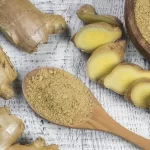The Best Medication for Stomach Ulcer
Regarding best medication for stomach ulcer, detecting an ulcer involves a series of steps that begin with a comprehensive consultation with your doctor. Initially, your doctor will delve into your medical history to understand your symptoms better. Following this, a physical examination will be conducted to evaluate any visible signs or discomfort you might be experiencing.
Subsequently, to further investigate the possibility of an ulcer, your doctor might suggest various diagnostic tests. One such test focuses on detecting the presence of a bacterium called H. pylori, which is often associated with ulcers.
This can be done through laboratory tests that may involve analyzing your blood, stool, or even your breath. Interestingly, the breath test stands out as the most precise method.
Here’s how the breath test works: You’ll be asked to consume a substance that contains a small amount of radioactive carbon. If H. pylori bacteria are present in your stomach, they will break down this substance.
Later on, you’ll blow into a specialized bag, which will then be sealed. If the bacteria are indeed present, your breath sample will reveal traces of the radioactive carbon in the form of carbon dioxide.
If you happen to be taking antacids before undergoing these tests for H. pylori, it’s crucial to inform your doctor. This is because certain medications like antacids can potentially interfere with the accuracy of the test, leading to misleading negative results.
Depending on the specific test being conducted, you might need to refrain from taking antacids for a certain period to ensure the reliability of the results.
Another diagnostic procedure that your doctor might recommend is an endoscopy. This involves using a slender, flexible tube equipped with a lens, known as an endoscope, to examine the inner lining of your upper digestive system.
The procedure starts with the insertion of the endoscope through your mouth and down your throat, allowing your doctor to visualize your esophagus, stomach, and small intestine. During this examination, any ulcers or abnormalities can be identified.
If an ulcer is detected during the endoscopy, your doctor might opt to take a small tissue sample, known as a biopsy, for further analysis in a laboratory. This biopsy can also help determine whether H. pylori bacteria are present in the lining of your stomach.
Endoscopy is particularly recommended for individuals who are older, exhibit symptoms of gastrointestinal bleeding, or have recently experienced unexplained weight loss, difficulty eating, or swallowing issues. Even if your symptoms start to improve with treatment, it’s advisable to undergo a follow-up endoscopy to confirm that the ulcer has healed.
SEE ALSO: Home Remedies for Mouth Ulcers
Additionally, an upper gastrointestinal series, sometimes referred to as a barium swallow, can be utilized to visualize your esophagus, stomach, and small intestine using X-rays.
During this procedure, you’ll be asked to swallow a white liquid containing barium, which coats the inner lining of your digestive tract. This coating enhances the visibility of any ulcers or abnormalities, making them easier to identify on the X-ray images.

A graduate of Computer Science and Information Management Technology. Diploma – Caregiving, Certificates – Dementia and Diabetes Awareness and Management. A researcher, blogger, songwriter, singer and acoustic guitarist. Born in an environment where natural talents such as healing are imparted at our natural birth. This natural talents of healing is the result of our genetic inheritance and the training from family environment.













